Author’s note: Through TNOC, we are encouraged to take a broad view of how nature can contribute to urban life. “Many voices, greener cities, better cities” is our mantra. Given the recent election of Mr. Donald Trump in the United States, with all that portends for voices, cities, and the green, I thought it might be useful, even comforting, to take the long view. Hence a short excerpt from a book proposal in preparation. Please let me know what you think.
If we viewed history in cross-section, it might look something like Figure 1. A simple curve shows the trajectory of the human population—since the first farmer thought to put a seed in the Earth during the Neolithic Revolution through to the modern, crowded, crazy Internet Age of the early 21st century. Population—the number of people on Earth—is on the y-axis, and time is on the x. For nearly all of human history, the curve hugged the bottom of the plot, an 11 millennia-long, slow burn to reach an unexpectedly steep slope upwards. Then there is a change, the alteration at the root of all alterations.
Around 1750, the curve tips upward, slowly at first, and then with an inexorable, powerful, careening surge, whips up toward the top of the plot. In fact, the slope between 1900 – 1970 is so steep, the curve verges on the vertical. Although it may not be visible on the full axis of human history, the slope after 1970 starts to fade, minutely coming back to “Earth”. That slight fade (Figure 1a), so important not only to our past and present, but to our future, is known mainly to demographers, the bean counters of the social science world. All most of us see are the crowds—on the expressways, in the shopping malls, in the stacked apartment complexes of the world’s cities and the endless rows of houses in the expanding suburbs; no one can actually see a world population of 7.3 billion souls.
Yet, the demographers know, as everyone needs to know, that in the 21st century, the rate of growth of the world’s population is in decline (Figure 1a); the population, while still growing, will grow at a slower rate this year than last, and slower still than two years ago. The human bean counters quibble about when, but nearly all agree, given current trends, that some time before or shortly after 2100, the world population will stop growing. It will stabilize. It might even fall. We will have reached the greatest height of human population on Earth, arguably the peak of history. What then?
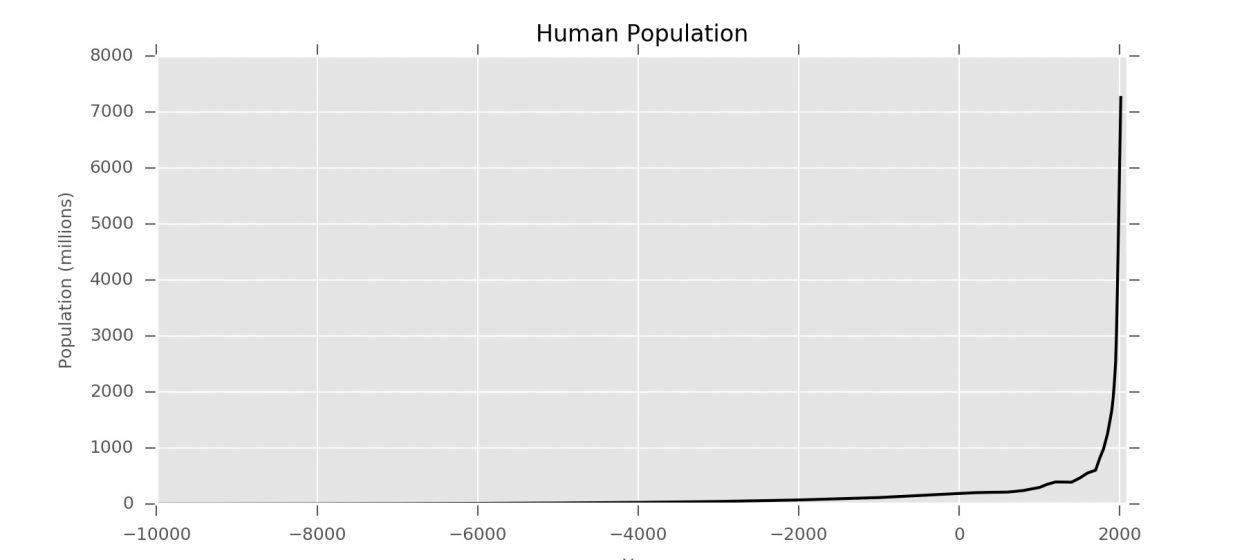
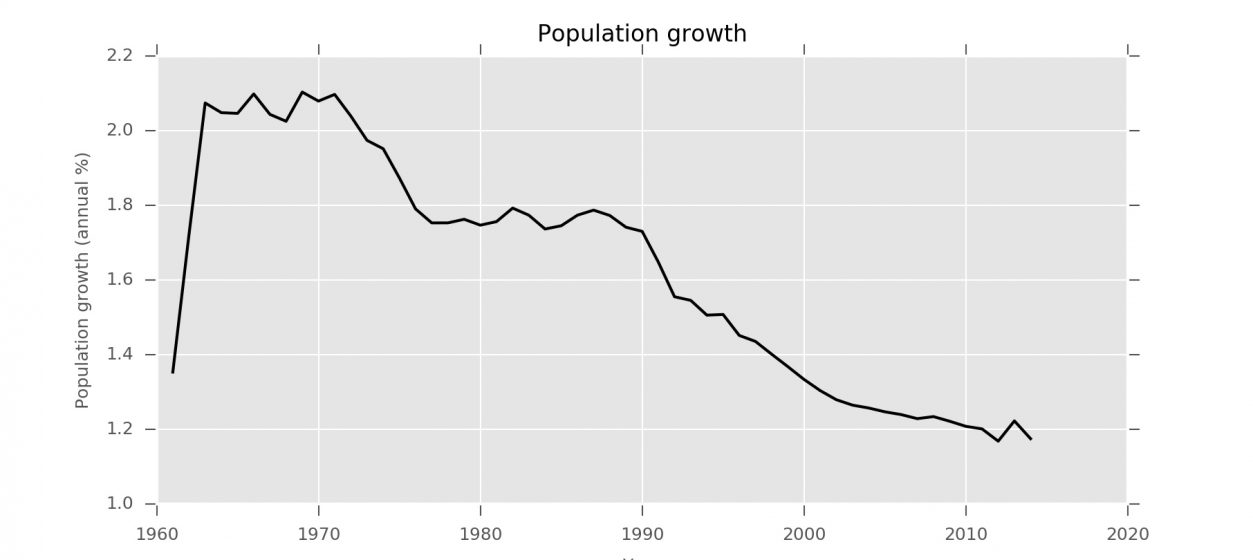
Figure 2 gives another slice through history. It looks a lot like Figure 1, except that the vertical axis is urbanization, not population. Urbanization measures the percentage of people that live in towns and cities rather than in rural localities. As you can see on the second graph, for most of human history, most people lived in scattered agricultural settings; very few people took the chance to move to towns and cities, which were not only dirty but deadly, but tiny as a result, at least by modern standards. Jerusalem at the time of Jesus was inhabited by about 70,000 people, the size of contemporary Bamberg, Germany, or Newport Beach, California. Rome at its height had maybe a million residents, the size of modern day New Orleans or Helsinki. Then, about the same time as the world’s population began to swing upward in the late 18th century, so did urbanization.
Indeed, these two phenomena are tightly interconnected. Whereas with population, it’s unclear what a theoretical maximum might be, with urbanization, the theoretical maximum is 100 percent (since it is a fractional measure.) No society—outside small city states such as Singapore or the Vatican—has ever neared the 100 percent urbanized mark, but many societies have reached 70-80 percent of their populations living in town, including most countries in Europe, Latin America, North America, today. (Different countries do have slightly different definitions of urban, which should be kept in mind, but is not a significant enough factor to materially change the overall trend.) Urbanization, like population, has been on a steep, statistical progression upward, and it too will reach a maximum—most likely during the 21st century, and probably somewhat before the peak of population. The greatest geographic redistribution of people in the history of the world will have finished. What does it mean?
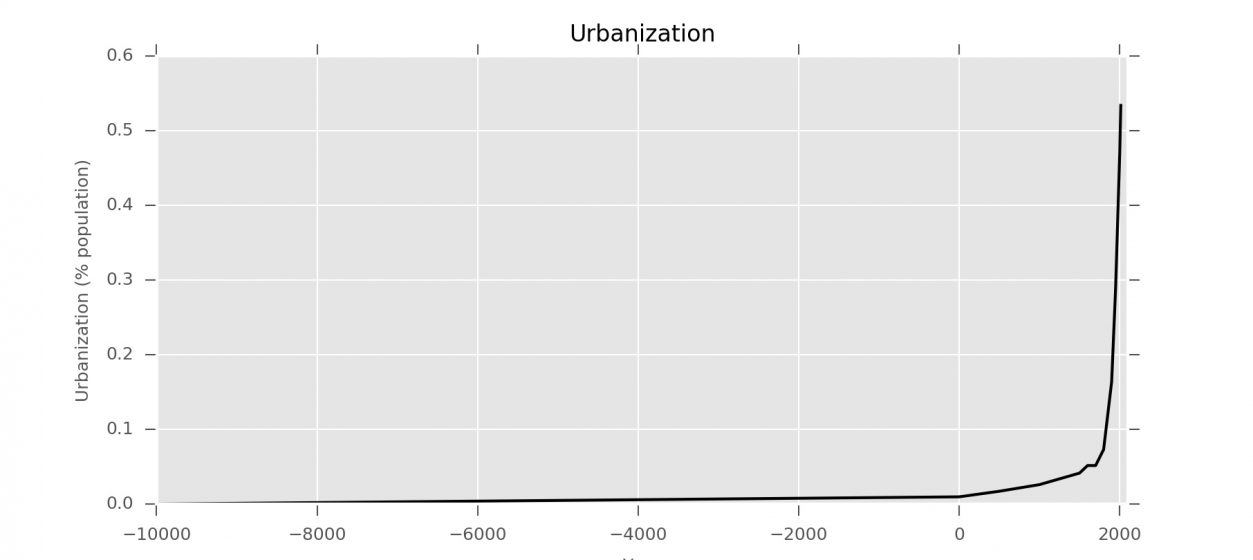
A third curve describes history as a mountain of money. Figure 3 shows the evolution of the size of the global economy, measured as the sum of the monetary value of the trillions of exchanges made in the world each year—in economics-speak, this is called the gross domestic product of all nations. The monetary view of history mimics the population and urbanization curves, but at an even greater extremity,: growing so slowly as to be barely noticeable in modern terms for millennia before, as if by a miracle, zooming upward like a rocket, shooting into the 20th century. Long-term projections of the world’s economic future, like this one from PwC, optimistically imagine that the line will continue to go up for as long as we dare to forecast, though how fast the economy will grow and through what mechanisms, no one really knows. It would be great to know how it could be maintained, because, as Thomas Piketty has shown in his book about 21st century capital, investments made on such a steep slope deliver a mighty return (estimated at 4-5 percent per year over the last 100 years). What lies at the root of such tremendous growth? Economists are keen to point to technology, and there is no doubt that technology has delivered wonders. Politicians are fond of talking about bringing jobs and retraining the work force, and indeed, most folks are happier with a job than without one. These are good and worthy ideas and important ones, but at best they are just decorative fixtures atop the true engines of economic growth over the last 250 years: for at work in the factories at the root of the economic mountain are people living and working in cities. Urban people are creative and more often employed at tasks to which they are particularly suited than their rural colleagues; not the least of the urban agglomerative miracles is the provision of a rich diversity of tasks, specialization made manifest. All of which leads one to wonder: if urbanization peaks and population stabilizes or even declines, whence the economy?
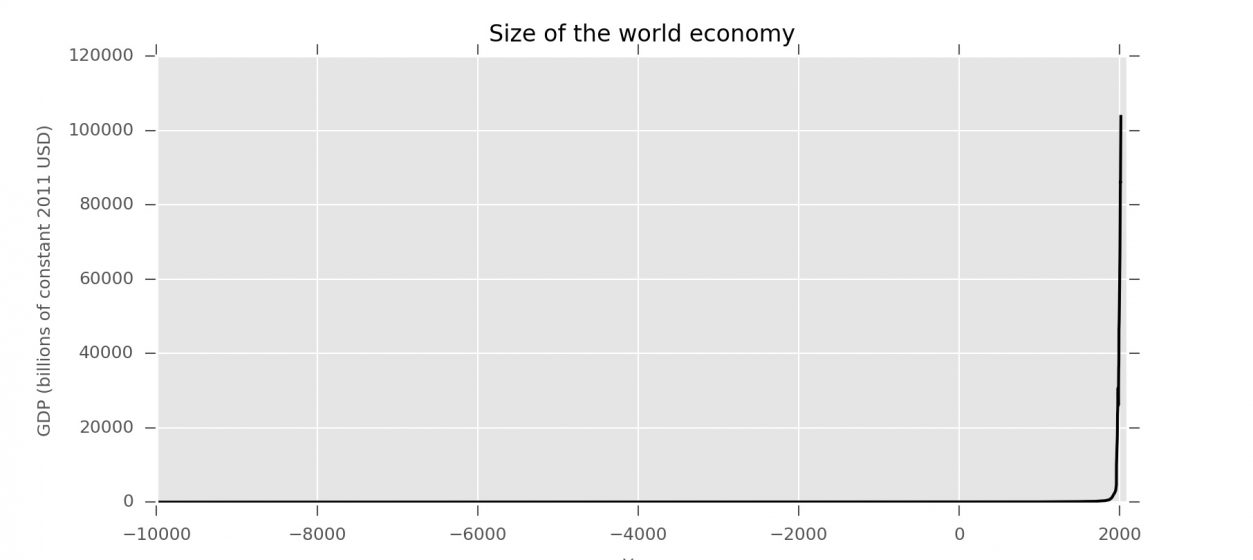
Any modern dissection of world history would be incomplete without a plot describing the rise of atmospheric carbon dioxide shown in Figure 4. Carbon dioxide can’t be seen, heard, or smelled, but its concentration has almost doubled in the atmosphere over the last 200 years, after having been relatively stable for some 10,000 years prior, all the way back to the last Ice Age. This graph, like the three others, shows a dramatic increase, after a long equilibrium, in about the same time frame as the other three. Carbon pollution is a wicked and unintended side effect of the Industrial Revolution, when some cleverer-than-average types, and their urban friends with money to invest, figured out that there was energy lying around unused in the ground, especially in the form of coal, but also as oil and “natural” gas.
The rise of the modern, mechanized economies based on fossil fuels parallels the assent of population, the movement of people from fields to towns, and the expansion of exchange. Growing populations have required more food to be produced by industrial processes on ever-larger farms cut from forests and grasslands; growing towns have required liberal applications of material and concrete to expand outward; and growing economies have seized on the consumptive advantages of new sources of energy, largely neglecting the smoky wastes that once covered the widening industrial cities with soot. Hence the relentless trend of the carbon curve, bending upwards toward the sky, with no known natural limit except the feedback nature gives in the form of rising sea levels, more intense storms, shifting species, and ever grimmer prognostications from the prophets of climate change.
In recent times, we have entered into a carboniferous terrain not seen in the last 330 million years. Carbon dioxide in the atmosphere—just one of the many signals of the environmental sickness of our time—may peak someday, too, and let us all hope that it is sooner rather than later. Meanwhile, we suffer the environmental damages of the last 300 years with the frogs and the fishes and wonder: how can the Earth carry on?
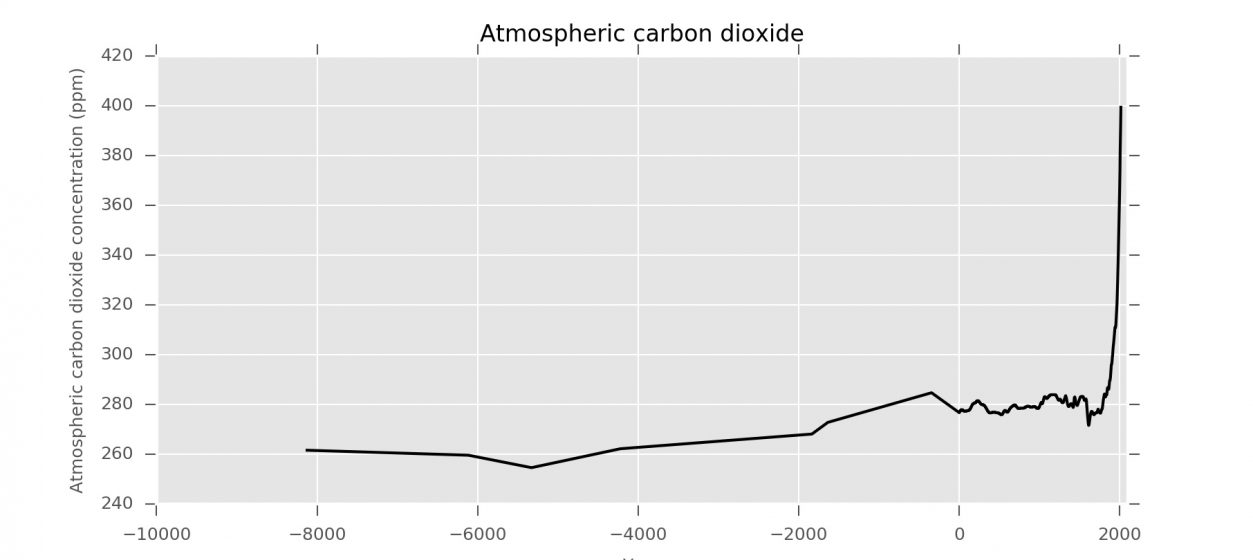
These are the four figures of the modern Apocalypse: (over)population, urbanization, economic stagnation, and climate change. Or so we are told. People have been worrying about population ever since Reverend Malthus pointed out in 1798 that the number of people grew geometrically, while the production of food grew arithmetically, such that starvation was “inevitable” and feeding the poor “useless”. Jean-Jacques Rousseau presaged many a rural philosopher of later years when he wrote “Les villes sont le gouffre de l’espèce humaine”. (“Cities are the abyss of the human species.”) Economic stagnation was the primary concern for Adam Smith, the great economist, who tried to solve it with his notions of the division of labor and the accumulation of capital; even he predicted that after a good 200-year run, the Invisible Hand would falter, because population growth would drive down wages, natural resources would become scarce, and labor can only be divided so far. Smith’s clock started running in 1776, with the publication of the Wealth of Nations, and expired just as Jimmy Carter, a one-time peanut farmer, became President across the sea in the midst of a recession.
Eighteenth century thinkers looking up at the mountains of history from the low foothills of their time, failed to see the fourth curve in the sky with any clarity, but modern environmentalists have more than made up for their historical oversight with terrifying predictions that would cause Malthus, Rousseau, and Smith to shudder in their wigs. It turns out that the climate—long-term patterns in the weather—is much affected by the atmospheric concentration of carbon dioxide (and related gases), which hold heat. From these tiny gas molecules, we owe the blessedly temperate climate that made life on Earth possible in the first place. Unfortunately, an atmosphere with more than desired molecules holds more heat than we want, stirring more powerful storms and less predictable patterns of precipitation, with concomitant effects on fires, floods, agriculture, the availability of drinking water, and so on. The title of a recent textbook succinctly sums it up: Dire Predictions: Understanding Climate Change.
No wonder that electronic book shelves of the late 20th / early 21st centuries heave with books about ends: The End of Nature, The End of Faith, The End of Reason, The End of Normal, The End of Sanity, The End of Wall Street, The End of Oil, The End of Poverty, even The End of History and the Last Man. We also read of the Sixth Extinction, The Big Short (The Doomsday Machine), and the Apocalyptic Planet: Field Guide to the Future of the Earth. Black Swans paddle unseen in the murky future and here comes everybody. (Personally my preference has long been for Where the Sidewalk Ends.)
If studying history has taught us anything, though, it is that history does not end. Rather it stumbles forward, as much happenstance as plan, good or bad for some, in pain or pleasure for others. The war to end all wars did not end wars (in retrospect, it led to the next one.) Capitalism, for all its excesses, has failed to be destroyed by them (yet). The globalization of liberal democracy, celebrated in the halcyon days at the end of the Cold War, has run straight into the buzz saw of terrorism and sectarian divide. And yet, through it all, up ‘til now, the four curves have continued their upward motion, practically unchanged by all the tumult below, like a ball off the bat of some cosmic game.
My belief is that the reason that dark premonitions have found such fertile ground in early 21st century culture—including in the election of Donald J. Trump—is that they reflect the uncertainty we all share about the future. That uncertainty, at its roots, links back to these four cross-sections of global civilization. Wherever people live on planet Earth today, no matter our income or politics, our language or our religion, we all feel how fast human life is changing and share a sinking feeling that it can’t keep going…up. The dynamics of change are so large, they are difficult to conceive; so profound in their consequences, they are practically unconscionable. As a result, in the popular discourse, there is a lot of finger pointing and a lot of talk, but not a lot of meaning. Most of us don’t have the time or the energy to stand back and look at the tableau in its entirety. As one friend recently said to me, “the extent of my time horizon is tomorrow.” And yet, given recent increases in human longevity, it is nearly certain that someone born today, as I’m typing these words, will live to see the peak of history by the end of this century, a mere 84 years away.
So what does all this mean for the nature of cities? A great deal, and more than I can write about in this forum. I’m hoping to find more space to elaborate in a book, but in the meantime, here are a few teasers:
- It is often said that the root of all environmental problems is population. What we are coming to realize is that the solution to population is cities. Modern urban living typically means better jobs and healthier lives and more opportunity than rural forms of life, which is the main attraction, but urban lifestyles also entail less space for kids, less need for kids to labor in fields, and more incentive and greater capacity to invest in the kids we’ve got. That’s why, around the world, urbanization goes hand-in-hand with longer lives and smaller families. Cities are the best form of birth control we’ve yet devised: they induce couples for their own inimitable reasons to choose to limit the population growth rate. For towns and cities to be effective agents of the demographic transition, however, they need to be attractive and satisfying places to be, such that they continue to attract immigrants from the hinterlands and retain the populations they already have. Green spaces are part of what make cities livable. And because cities tend to be constructed in places of high biodiversity in the first place, the nature of cities has the potential to make extraordinary natural habitat for people.
- What limits urbanization? Unhealthy environments and unemployment could. One reason why cities existed for so long but hardly grew until the nineteenth century is because they were death traps. Concentrating people also concentrates wastes and bugs, the kinds that spread disease. Once human demands are concentrated, cities depend on virtually uninterrupted flows of resources, especially in terms of water, food, and energy. As I wrote about in a previous book, Terra Nova, the good news is that modern science, urban planning, and a willingness to work with, instead of against, nature, can help diminish pollution, reduce consumption, provide clean air and water, and ensure the timely flow of inward-bound necessities. The bad news is that many cities, especially in the developing world, are not investing in cities or nature enough, with the result that poor rural immigrants become slightly less poor, urban dwellers, living in squalid and dangerous slums, when, with the right investment and less corruption, they could be leading better, longer, more productive lives, and having jobs, too. The good news is we know what to do to make this situation better and the sooner we do, the sooner the demographic (and other) consequences of urban life can kick in.
- In the long view, cities face entirely different challenges that are difficult to imagine in our current moment of immense growth. Just think: between now and 2100, we may double the size of the urban footprint on Earth. The population will peak at 9 – 10 billion souls, 70-80 percent of whom live in towns and cities. And then it seems possible, even likely where current trends to continue, that the world population will start to go down. (To assume sustained population growth beyond 2100 is either to assume we live much longer than is currently possible, or find a way to reverse the fertility declines of the last 100 years.) One set of projections suggests that if the whole world obtained the demographics of the Western world today, the global population two centuries further on, in 2300, will only be 2.3 billion. That means we will have approximately 80 percent more urban area than we need, which implies that the cities that we are building with such avidity now will have to shrink in the future. Some—perhaps many—may go away entirely. They will surely compete with each other, but in the coming centuries, the competition will be over maintaining population, rather than gathering it. Detroit and Dresden, where disinvestment and vacancy are widespread, are just our first ventures into the global realities of the 22nd century urban life. That may seem like a distant and unlikely prospect, but so our ancestors could never had guessed that by driving to the movies or warming their homes with a coal stove they could eventually change the climate.
There is a lot more to be said along these lines, but I’ll leave you here with this last thought in this Time of Trump: the future, like the past, will not be all good or all bad. It’s really hard to know what will happen, except to say, that like the past, it will be circumstantial, ironic, funny, tragic, stupid, heroic, and unexpected. The only enduring reality is that the future will be built on top of our dreams: how we imagine the future is how the future is made. That’s why I contribute to The Nature of Cities—so that I can dream, with my fellow visionaries, of many voices calling out for better, greener, saner cities in a better, greener, saner world.
Eric Sanderson
New York

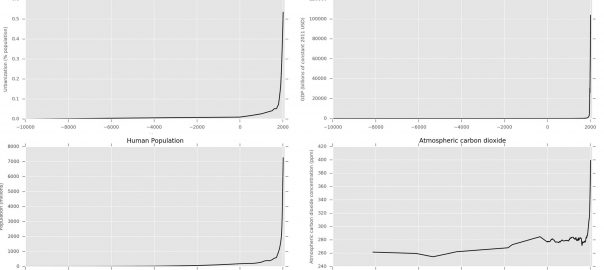







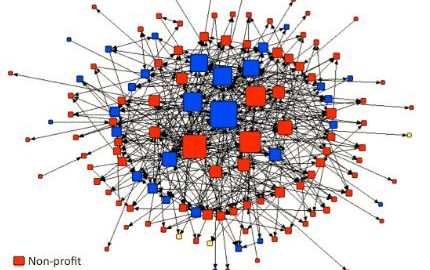
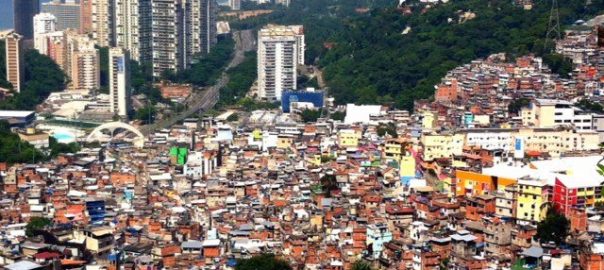

Add a Comment
Join our conversation